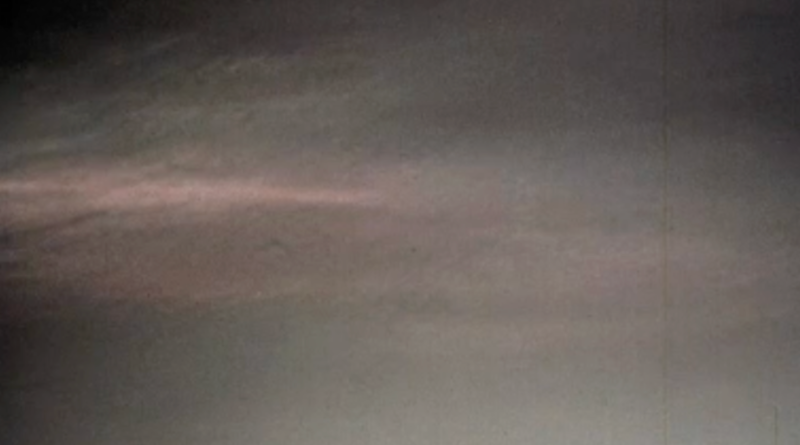NASA rover captures images of mysterious “mother-of-pearl” clouds above Mars
New images captured by NASA’s Curiosity rover show colorful clouds in the sky over Mars.
The images were captured by the rover’s Mastcam, which NASA’s Jet Propulsion Laboratory compared to the rover’s eyes. The clouds were spotted on Jan. 17, and the photos were taken over the course of 16 minutes, the space agency said in a news release.
The clouds, known as noctilucent or twilight clouds, contain frozen carbon dioxide, or dry ice. They are tinted with colors when the setting Sun scatters light. That color has led to them being nicknamed “mother-of-pearl” clouds.
While Mars’ atmosphere is 95% carbon dioxide, few of its clouds are at a high enough atmosphere and low enough temperature to contain frozen carbon dioxide. Most clouds on the planet are made of water ice. The clouds photographed by Curiosity are at an altitude of 37 to 50 miles above the planet’s surface. Other images show the clouds as white plumes falling through the atmosphere, before evaporating about 31 miles above Mars.
The twilight clouds have only been spotted in some areas of Mars’ southern hemisphere. NASA’s Perseverance Rover, which landed on Mars’ northern hemisphere in 2021, has not seen the clouds since it landed, but Curiosity has seen them in the southern hemisphere in four different Mars years.
Mark Lemmon, an atmospheric scientist with the Space Science Institute in Boulder, Colorado, told NASA that he believes certain regions of the planet are more likely to form the clouds. Gravity waves, which cool a planet’s atmosphere, could be a factor, he said.
“Carbon dioxide was not expected to be condensing into ice here, so something is cooling it to the point that it could happen,” Lemmon said in NASA’s news release. “But Martian gravity waves are not fully understood and we’re not entirely sure what is causing twilight clouds to form in one place but not another.”
Even though researchers don’t totally understand how the clouds are formed, they can predict when and where they will appear. Lemmon, who was a lead researcher on a 2024 paper detailing Curiosity’s first two years of cloud observations, said the phenomenon has “become so predictable that we can plan our shots in advance.”
The new cloud photos aren’t the only data Curiosity has sent back to NASA in recent weeks. The rover recently investigated a place called the Gediz Vallis channel, the space agency said.
It also visited an impact crater nicknamed “Rustic Canyon” to take photos and study the rocks around the crater. The 67-foot wide crater likely formed millions of years ago, based on the erosion of the site, NASA said.
The rover will continue on to a new location that includes what NASA called “boxwork,” or fractures in the planet’s surface formed by groundwater. When seen from space, the fractures look like giant spiderwebs, NASA said.

